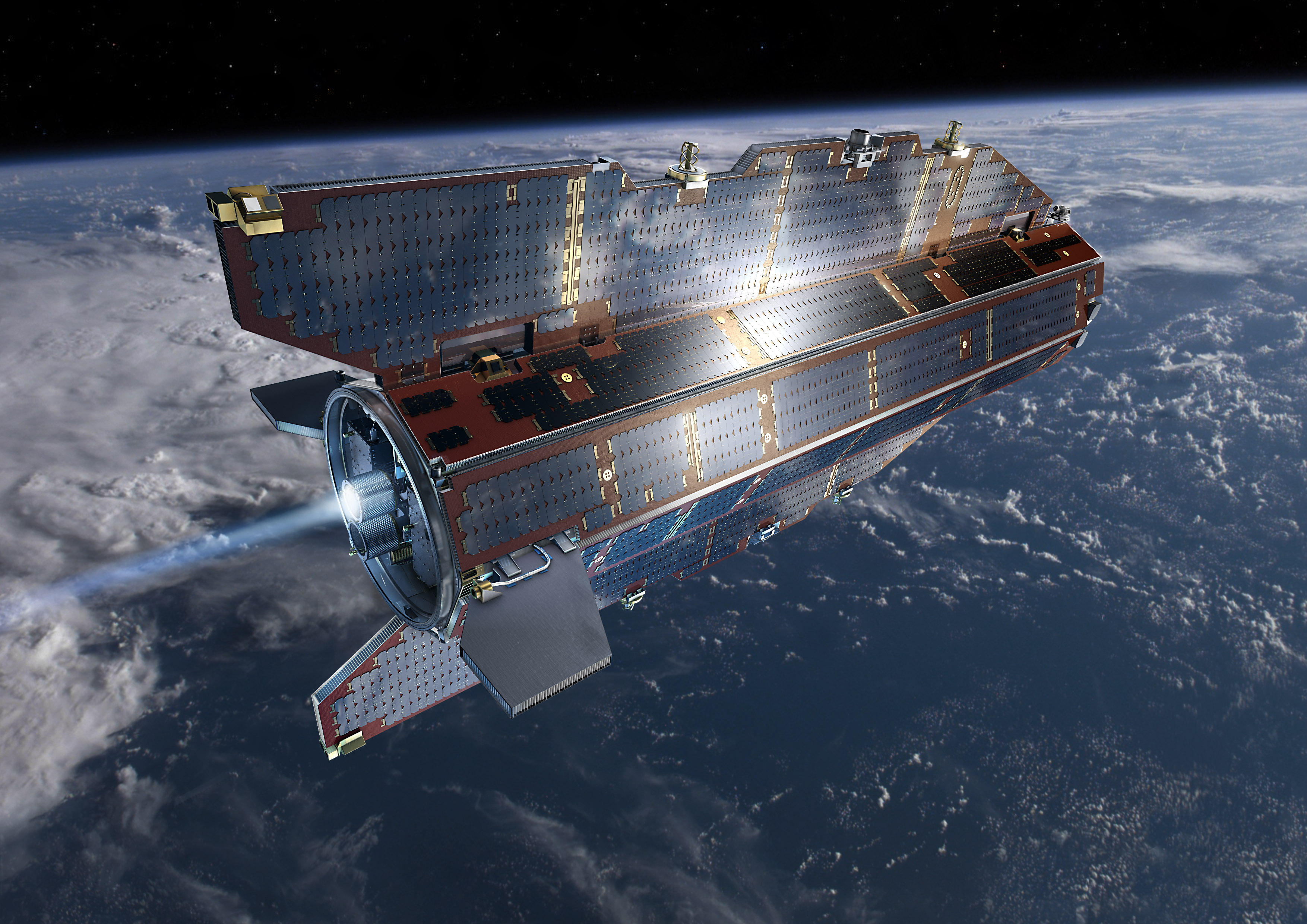The Gravity field and steady-state Ocean Circulation Explorer (GOCE) satellite has been orbiting Earth in super-low orbits since 2009, mapping out variations in Earth’s gravity in extreme detail. But its fuel ran out in mid-October and the satellite began its slow descent towards Earth, being brought lower and lower by the effects of the atmosphere. Engineers predict it will re-enter completely and fall back to Earth sometime this weekend.
But no one can say for sure when or where the 1-ton satellite will fall.
With no remaining fuel to guide its re-entry there’s no way to nudge or steer its descent. And while most of GOCE is predicted to disintegrate in the atmosphere, several parts might reach Earth’s surface. Experts predict as much as 25% of the spacecraft will survive reentry, as many parts are made of advanced materials, such as carbon-carbon composites.
Today, engineers from the GOCE mission said that the spacecraft is predicted to enter into Earth’s atmosphere sometime during the night between Sunday and Monday, November 10-11, 2013. Break-up of the spacecraft will occur at an altitude of approximately 80 km. “At the moment, the exact time and location of where the fragments will land cannot be foreseen,” says ESA.
The GOCE spacecraft was designed to fly low and has spent most of its mission roughly 500 km below most other Earth-observing missions, at an altitude of 255 km (158 miles), but has recently been at the lowest altitude of any research satellite at 224 km (139 miles).
Its durable construction and sleek design allowed it to stay in space for longer than expected; it nearly tripled its planned lifetime.
With GOCE data, scientists created the first global high-resolution map of the boundary between Earth’s crust and mantle – called the Moho – and to detect sound waves from the massive earthquake that hit Japan on 11 March 2011, among other results.
Heiner Klinkrad, Head of ESA’s Space Debris Office at ESOC, Darmstadt, Germany said that when the spacecraft reaches altitudes below 100 km, then atmospheric density will drastically increase on the spacecraft. It will enter at about 25,000 km/hour, and aerodynamic pressure and heating will cause a break-up of the spacecraft at approximately 80km altitude, causing a large number of fragments.
“The risk to the population on ground will be minute,” said Klinkrad. “Statistically speaking, it is 250,000 times more probable to win the jackpot in the German Lotto than to get hit by a GOCE fragment. In 56 years of space flight, no man-made space objects that have re-entered into Earth’s atmosphere have ever caused injury to humans.”
An international campaign will be monitoring the descent, involving the Inter-Agency Space Debris Coordination Committee. The situation is being continuously watched by ESA’s Space Debris Office, which will issue re-entry predictions and risk assessments.
ESA says they will keep the relevant safety authorities permanently updated.


I do not understand the logic of putting such a satellite in orbit, planning that it will make an uncontrolled re-entry after a few years. No risk to humans and property? Nonsense! Just ESA unacceptable irresponsibility!. Stopping its mission some time before its fuel was exhausted and using this remaining fuel to control the re-entry, so that it posed no risks to people down here, would have been an easy, wise and responsible solution. But this costs money, that seems to be more important than human lives.
I agree that it is nonsense to say that there are no risks
to humans and property. While there is a minute chance for a particular
indivudial to win a German lottery jackpot, for example, still of course people
are winning this and other jackpots all the time. So at least beside the
statistics of chances they should also state what kind of damage should be
expected if such object(s) hit a populated area.
ask NASA how much metals of all sort they are left in space after all those years of space race.there is a future in space recuperation ,,imagine you recovery some parts of Appollo still turning around.
This is totally irresponsible attitude. Heiner Klinkrad as head of the project made the choices and should be held personally responsible for any damage caused.
It depends on the actual probability. Hypothetically, if it were one chance in a hundred trillion, would you really bother worrying about it? I mean only that no one should say it is irresponsible without an actual probability to weigh the decision against, or reason to believe it is unacceptably high. Until then we are making assumptions and pretending to know better than we do.
Would it not be closer to truth to head this article with ”
GOCE Spacecraft Will Make Uncontrolled Re-entry Likely This Weekend”
Read more: http://www.universetoday.com/106284/goce-spacecraft-will-likely-make-uncontrolled-re-entry-this-weekend/#ixzz2k9BMRovu
That is a very cool-looking spacecraft!
Yesterday I drove to the shops with the full knowledge that there existed a possibility that I would run over a child, a puppy, or a member of an endangered species. And, astonishingly, my government keeps renewing my drivers licence, in full knowledge of the inherent risk of my conducting these shopping journeys on a regular basis.
But as head of this driving mission you made the choices and should be held personally responsible for any damage caused.
Yes, I am sure the parents, dog-owners and conservationists concerned would make darn sure of that. The proportion of legal ‘damage’ due to me would depend on the court’s deliberation about how reckless I had been in first taking the decision of driving my car to the shops and then how poorly I had undertaken that fateful journey.